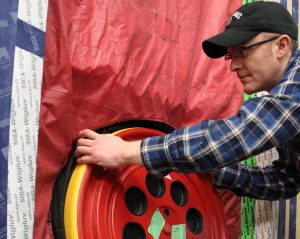
BCIT’s High-Performance Building Lab offers hands-on opportunities
February 2, 2017 | By HPAC Magazine

The HPBL features a stand-alone, airtight testing hut used for blower door tests, the detection and repair of air leaks, the balancing of residential heat recovery ventilation systems, and other teaching applications.
“Our new High-Performance Building Lab is a hub for formal and informal hands-on learning and training for students, industry and others interested in efficient building envelopes,” said Andrea Linsky, program head in the Centre for Energy Systems Applications at British Columbia Institute of Technology’s (BCIT) School of Construction and the Environment (SoCE).
The High-Performance Building Lab (HPBL) also responds to new requirements for energy-efficient housing and recent changes to the design of small building construction and envelopes. Construction technologists, designers and builders will benefit from the training opportunities to become familiar with emerging building envelope technologies. The facility, finished in late summer 2016, was funded by in part BC Housing.
The HPBL adds to BCIT SoCE’s existing role in advancing the sustainability of BC’s built environment. Linsky notes that the HPBL is one of three such training grounds in the world. “The lab offers a rare opportunity to be trained in the construction of energy-efficient new and existing buildings.”
The lab is being used for several educational programs, including the architectural and building technology diploma, the bachelor of architectural science and the Passive House tradesperson training course, and is also open to industry and other stakeholders for rental and custom course development.
Linsky says that the City of Vancouver, for example, has recently provided training for their home inspectors, who will take part in the programs for high-performance building envelopes and associated heating and ventilation systems. Some of the City’s inspectors have already taken part in Passive House training at the HPBL. Linsky also foresees programs dedicated to heat recovery ventilation systems associated with high-performance envelopes, including balancing.
There are also wall practice panels that allow students to practice working with different framing, insulating, taping, and window/door interfaces. In addition, cut-away building envelope models are displayed, and educational signage is present throughout the lab. The lab has integrated presentation and hands-on work space, which helps to facilitate engagement.
Linsky describes the current lab as Phase I of what she sees as an evolving facility in response to building industry needs. “We are happy to talk to anyone interested in high-performance buildings because we want to change future construction to achieve ultra-high energy efficiency.” The lab may also integrate a research component in the future where researchers can explore wall and window assembly solutions for high-performance buildings.




